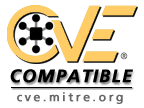Unrestricted Externally Accessible Lock |
| Weakness ID: 412 (Weakness Base) | Status: Incomplete |
Description Summary
Extended Description
This prevents the software from acting on associated resources or performing other behaviors that are controlled by the presence of the lock. Relevant locks might include an exclusive lock or mutex, or modifying a shared resource that is treated as a lock. If the lock can be held for an indefinite period of time, then the denial of service could be permanent.
| Scope | Effect |
|---|---|
Availability | When an attacker can control a lock, the program may wait indefinitely until the attacker releases the lock, causing a denial of service to other users of the program. This is especially problematic if there is a blocking operation on the lock. |
White Box Automated code analysis techniques might not be able to reliably detect this weakness, since the application's behavior and general security model dictate which resource locks are critical. Interpretation of the weakness might require knowledge of the environment, e.g. if the existence of a file is used as a lock, but the file is created in a world-writable directory. |
| Reference | Description |
|---|---|
| CVE-2001-0682 | Program can not execute when attacker obtains a mutex. |
| CVE-2002-1914 | Program can not execute when attacker obtains a lock on a critical output file. |
| CVE-2002-1915 | Program can not execute when attacker obtains a lock on a critical output file. |
| CVE-2002-0051 | Critical file can be opened with exclusive read access by user, preventing application of security policy. Possibly related to improper permissions, large-window race condition. |
| CVE-2000-0338 | Chain: predictable file names used for locking, allowing attacker to create the lock beforehand. Resultant from permissions and randomness. |
| CVE-2000-1198 | Chain: Lock files with predictable names. Resultant from randomness. |
| CVE-2002-1869 | Product does not check if it can write to a log file, allowing attackers to avoid logging by accessing the file using an exclusive lock. Overlaps unchecked error condition. This is not quite CWE-412, but close. |
Phases: Architecture and Design; Implementation Use any access control that is offered by the functionality that is offering the lock. |
Phases: Architecture and Design; Implementation Use unpredictable names or identifiers for the locks. This might not always be possible or feasible. |
Phase: Architecture and Design Consider modifying your code to use non-blocking synchronization methods. |
| Nature | Type | ID | Name | View(s) this relationship pertains to |
|---|---|---|---|---|
| ChildOf |  Category Category | 361 | Time and State | Development Concepts (primary)699 Seven Pernicious Kingdoms (primary)700 |
| ChildOf |  Category Category | 411 | Resource Locking Problems | Development Concepts699 |
| ChildOf |  Weakness Base Weakness Base | 667 | Insufficient Locking | Research Concepts (primary)1000 |
| ChildOf |  Category Category | 730 | OWASP Top Ten 2004 Category A9 - Denial of Service | Weaknesses in OWASP Top Ten (2004) (primary)711 |
| CanAlsoBe |  Weakness Base Weakness Base | 410 | Insufficient Resource Pool | Research Concepts1000 |
| MemberOf |  View View | 630 | Weaknesses Examined by SAMATE | Weaknesses Examined by SAMATE (primary)630 |
| This overlaps Insufficient Resource Pool when the "pool" is of size 1. It can also be resultant from race conditions, although the timing window could be quite large in some cases. |
| Mapped Taxonomy Name | Node ID | Fit | Mapped Node Name |
|---|---|---|---|
| PLOVER | Unrestricted Critical Resource Lock | ||
| 7 Pernicious Kingdoms | Deadlock | ||
| OWASP Top Ten 2004 | A9 | CWE More Specific | Denial of Service |
| CAPEC-ID | Attack Pattern Name | (CAPEC Version: 1.4) |
|---|---|---|
| 25 | Forced Deadlock |
| A weakness where: 1. either an end statement performs a blocking operation on an externally accessible lock or 2. a code path has 2.1. the start statement that performs a non-blocking operation on an externally accessible lock and 2.2. the end statement that is a condition which checks that the lock operation failed and that either 2.2.1. leads to the start statement or 2.2.2. leads to abnormal termination. |
| Submissions | ||||
|---|---|---|---|---|
| Submission Date | Submitter | Organization | Source | |
| PLOVER | Externally Mined | |||
| Contributions | ||||
| Contribution Date | Contributor | Organization | Source | |
| 2008-08-29 | KDM Analytics | Feedback | ||
| suggested clarification of description and observed examples, which were vague and inconsistent. | ||||
| Modifications | ||||
| Modification Date | Modifier | Organization | Source | |
| 2008-07-01 | Eric Dalci | Cigital | External | |
| updated Potential Mitigations, Time of Introduction | ||||
| 2008-08-01 | KDM Analytics | External | ||
| added/updated white box definitions | ||||
| 2008-08-15 | Veracode | External | ||
| Suggested OWASP Top Ten 2004 mapping | ||||
| 2008-09-08 | CWE Content Team | MITRE | Internal | |
| updated Common Consequences, Description, Detection Factors, Relationships, Observed Example, Relationship Notes, Taxonomy Mappings | ||||
| 2008-10-14 | CWE Content Team | MITRE | Internal | |
| updated Description | ||||
| 2009-07-17 (Critical) | KDM Analytics | External | ||
| Suggested a better name and the minimal relationship with resources regardless of their criticality. | ||||
| 2009-07-17 | KDM Analytics | External | ||
| Added a White Box Definition and clarified the consequences. | ||||
| 2009-07-27 | CWE Content Team | MITRE | Internal | |
| updated Common Consequences, Description, Name, Potential Mitigations, White Box Definitions | ||||
| Previous Entry Names | ||||
| Change Date | Previous Entry Name | |||
| 2008-04-11 | Unrestricted Critical Resource Lock | |||
| 2009-07-27 | Unrestricted Lock on Critical Resource | |||





